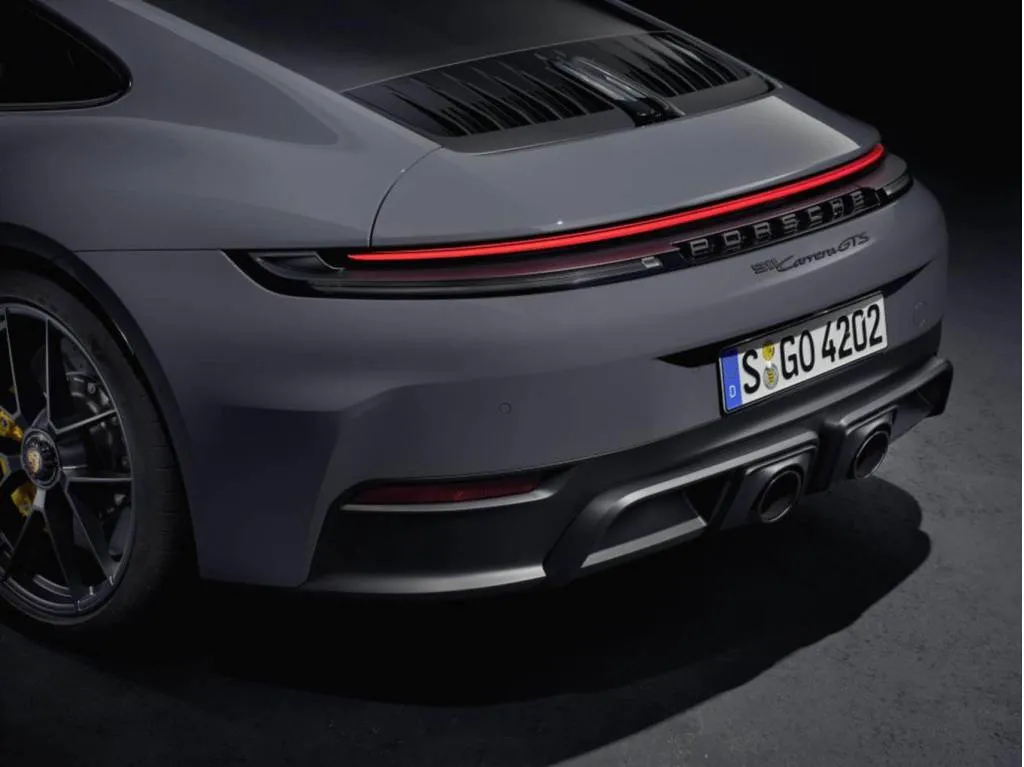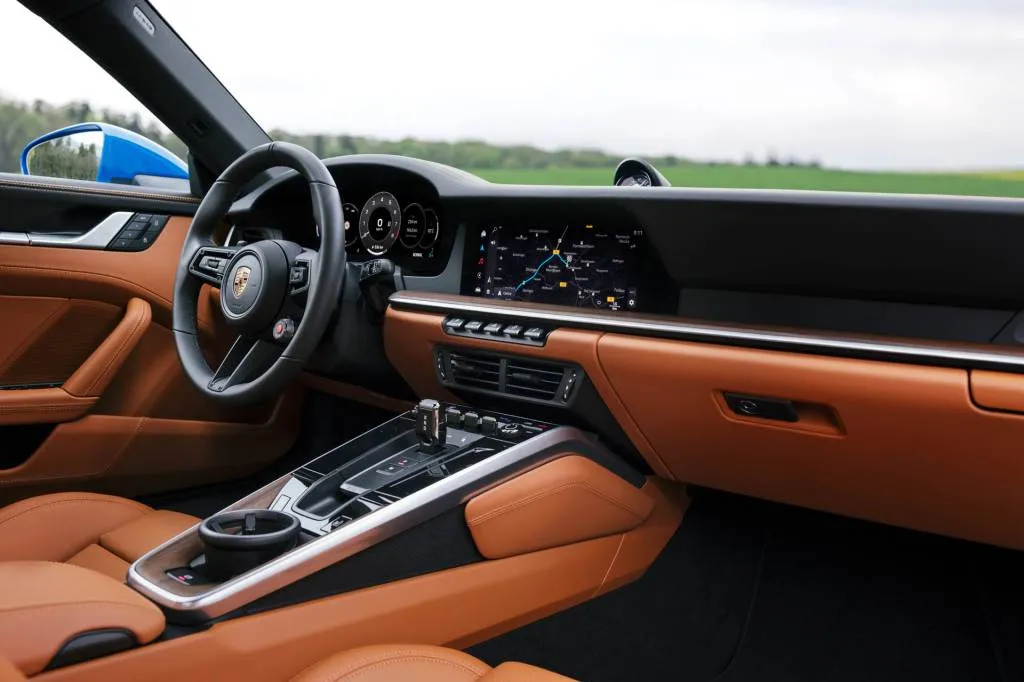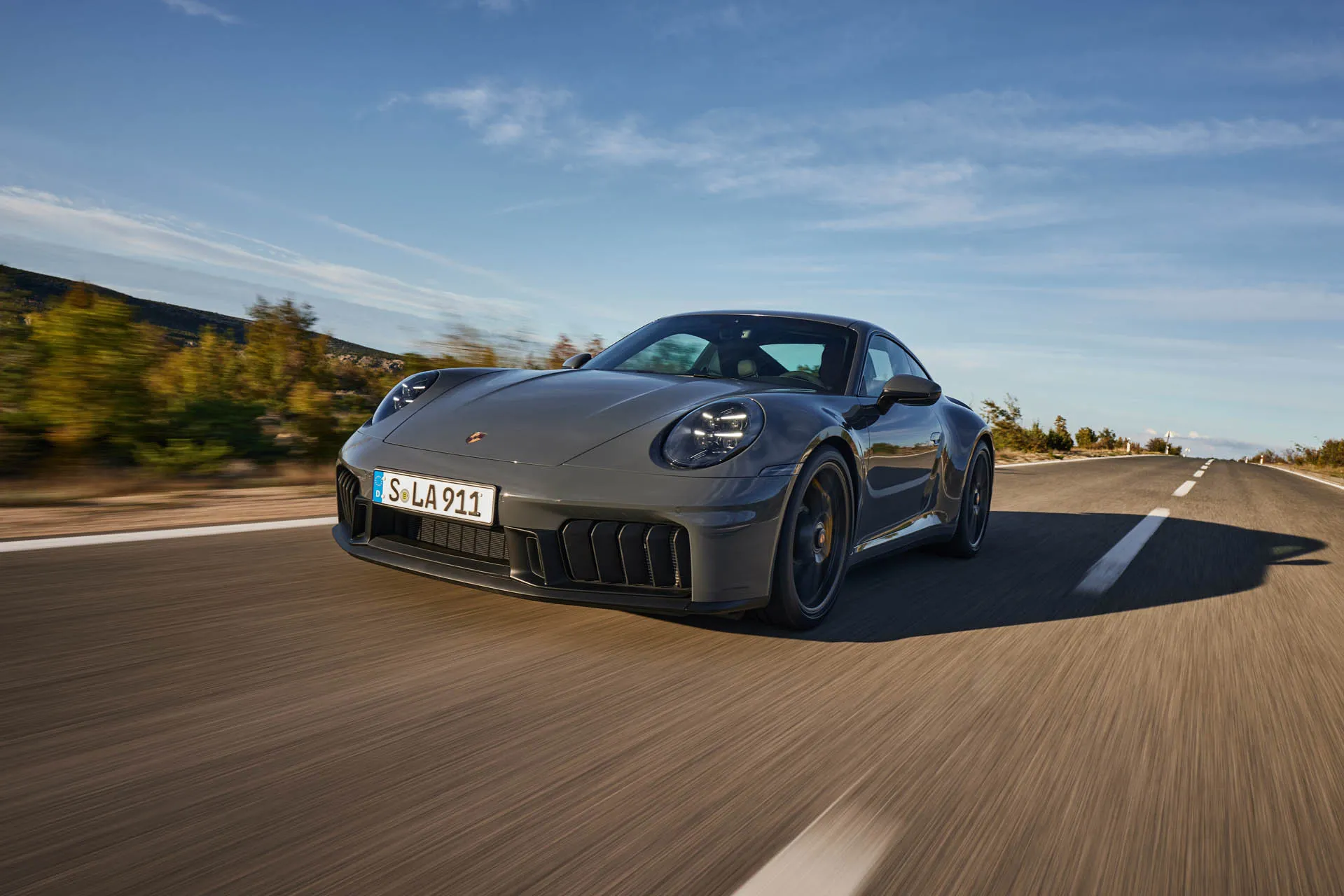The current 992 generation of the Porsche 911 has undergone a mid-cycle refresh for the 2025 model year, and among the updates is the availability of a hybrid powertrain for the first time.
Revealed on Tuesday ahead of a market launch this fall, the updated 2025 911 includes the Carrera, Carrera GTS, and Targa 4 GTS grades, and the hybrid powertrain is only featured in the GTS grades so far.
The current Turbo, Turbo S, and GT3 RS grades will continue for the 2025 model year unchanged, though updates for the Turbo and Turbo S are planned, with the latter expected to receive a hybrid powertrain as well. An updated GT3 should also be coming, though it isn’t clear whether there will be an updated Carrera S as well.
The new hybrid powertrain, dubbed the T-Hybrid, marks the biggest change to the 911 since the car underwent the switch from air-cooled to water-cooled engines with the arrival of the 996 generation in the 1990s. The powertrain consists of a compact and lightweight electric motor integrated with the 911’s standard 8-speed dual-clutch automatic transmission.
2025 Porsche 911 Carrera GTS
The electric motor generates 54 hp on its own and is used to aid the internal-combustion engine, in this case a newly developed turbocharged 3.6-liter flat-6 that delivers 478 hp on its own. The turbocharger also features an electric motor designed to speed up the compressor wheel at low rpm to ensure boost pressure develops quickly. Like the transmission-integrated electric motor that can recover energy under braking, the turbocharger-integrated motor recovers energy from the exhaust. All of the recovered energy is stored in a small battery with a capacity of only 1.9 kwh. The use of a small battery means the added weight of the hybrid system is only 103 pounds.
Much like the hybrid systems Porsche uses in motorsports, which the engineers used as inspiration, the 911 hybrid system’s primary function is to boost performance, as opposed to reducing fuel consumption. Combined peak output for the Carrera GTS is 532 hp, up 59 hp from the current version, and Porsche quotes a 0-60 mph time of 2.9 seconds, which is 0.3 of a second quicker than in the current version. The top speed is 194 mph.
The updated Carrera sticks with the current Carrera’s twin-turbocharged 3.0-liter flat-6, though there are some tweaks to boost power. These include the addition of the turbochargers from the current Carrera GTS, plus the intercooler from the current Turbo. Peak power is 388 hp, up 9 hp compared to the current Carrera.
Other changes to the 2025 911 include new internals for the headlights that include matrix LED technology and now integrate the daytime running lights (previously they were separate units). There is also a new design for the taillights, and revised fascias that Porsche says are more aerodynamic. New wheel patterns are also on offer, ranging between 19 and 21 inches.

2025 Porsche 911 Carrera GTS

2025 Porsche 911 Carrera

2025 Porsche 911 Carrera
For the interior, a fully digital dash is used for the first time. In the current range, the centrally positioned tachometer is still an analog unit. An engine start button makes its appearance in the 911 for the first time (to the left of the steering wheel in Porsche custom), and the steering wheel has also been updated with more functions, including a standard drive mode selector.
Porsche’s 2025 911 lineup is currently available to order. The Carrera starts at $122,095 and is available exclusively with rear-wheel drive. That represents a price increase from the previous year of about $6,000.
Upgrading to the Carrera GTS, the new hybrid grade, will cost at least $166,895. The GTS can be had with rear- or all-wheel drive, though with the Targa body style it only comes with all-wheel drive.
As mentioned above, the Turbo, Turbo S, and GT3 RS carry over unchanged for the 2025 model year. They are priced from $199,195, $232,395, and $243,295, respectively. All prices include a $1,995 destination charge.
